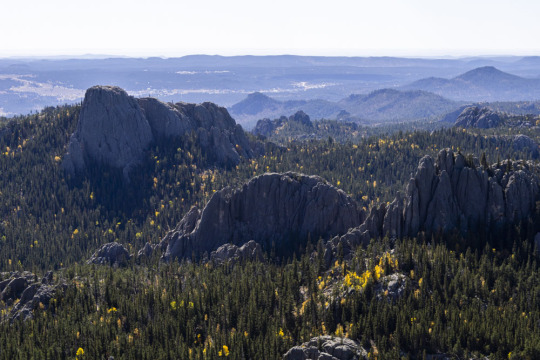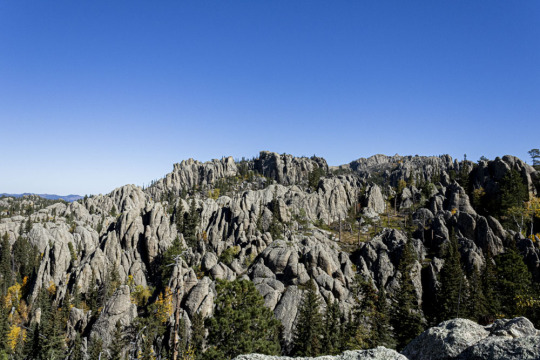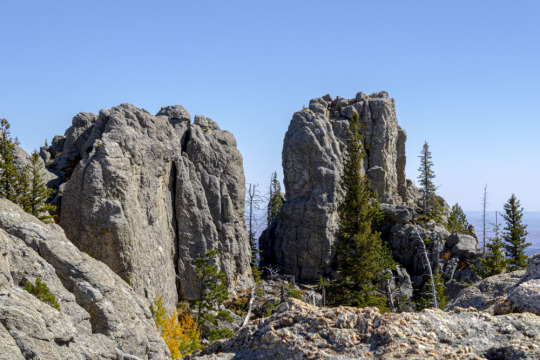#Steltenkamp
Text









Nicholas Black Elk: Medicine Man, Missionary, Mystic
Author: Michael F. Steltenkamp
Book: 1/1
Genre: biography
Summary: Nicholas Black Elk: Medicine Man, Missionary, Mystic, tells the full interpretive story of Black Elk. Steltenkamp shows that Black Elk was not the native traditionalist others have depicted him to be, but rather a religious thinker with a positive outlook that merged Lakota ideas with Christianity. This text tells of Black Elk’s travels, visions, experience in the Battle of Little Big Horn, and the way he led his people along the path of God.
Review: I immediately pulled this book off the shelf when I saw it’s title. Quick fun fact: I attend school in the Black Hills area of South Dakota and I have personally hiked Black Elk Trail in Custer State Park. It is absolutely gorgeous. Since I have been in some of places that Black Elk has walked, I was eager to learn about his story. Steltenkamp’s telling of Black Elk’s story provided in-depth details, as well as parts of his story that many authors did not want to tell. Previous biographies about Black Elk only tell of his pre-Christian life while practicing Lakota traditions. However, Black Elk wanted his story as a missionary and his family’s involvement in their church to be told. Steltenkamp gives the reader the background of other authors’ stories and this lack of truly understanding Black Elk as a Christian. Steltenkamp fully immerses the reader into Black Elk’s life as a medicine man, heyoka, missionary, and an important figure in the church. This book contains lots of information, some parts more entertaining than others; I would recommend this book to anyone who loves history, non-fiction, and learning about other cultural experiences.
I included photos I took at Black Elk Peak, enjoy the view!
Rating: 5/5 stars ⭐️⭐️⭐️⭐️⭐️
Keep reading⛰
#nicholas black elk#black elk#Michael f Steltenkamp#Steltenkamp#black elk trail#black elk peak#custer state park#south dakota#black hills#native people#native culture#indigenous#native american#lakota#pine ridge reservation#oglala lakota#keep reading#bookguide#currently reading#new books#aesthetic#quotes#bibliophile#booklr#quoteoftheday#quotation#book blog#book summary#book review#bookish
10 notes
·
View notes
Text
Recommended Reads for 2022
Novels:
Paul Kingsnorth, The Wake, Beast, and Alexandria
Evelyn Waugh, Helena
Katy Carl, As Earth without Water
George MacDonald, The Princess and the Goblin, The Princess and Curdie, Phantastes, and Lilith
Poetry:
Martin Shaw and Tony Hoagland, Cinderbiter: Celtic Poems
Amit Majmudar, What He Did in Solitary
Thomas Merton, Selected Poems
Anya Silver, I Watched You Disappear
Simon Armitage, trans., Pearl
Simon Armitage, trans., Sir Gawain and the Green Knight
Rhina P. Espaillat, Her Place in These Designs
Ephraim the Syrian, Select Poems (Brock and Kiraz, eds.)
Eavan Boland, Outside History: Selected Poems, 1980-1990
Diane Glancy, A Line of Driftwood: the Ada Blackjack Story and Island of the Innocent: A Consideration of the Book of Job
Nonfiction:
Arthur Brooks, Love Your Enemies: How Decent People Can Save America from the Culture of Contempt
Jeffrey Bilbro, Reading the Times: A Literary and Theological Inquiry into the News
Laura Mooneyham White, Jane Austen’s Anglicanism
Mark Boyle, The Way Home: Tales from a Life without Technology
Paul Kingsnorth, Confessions of a Recovering Environmentalist
Simone Weil, The Need for Roots
Michael Brendan Dougherty, My Father Left Me Ireland
Robert Nisbet, The Quest for Community
Dom Rembert Sorg, Holy Work: Towards a Benedictine Theology of Manual Labor
John G. Neihardt and Black Elk, Black Elk Speaks: Being the Life Story of a Holy Man of the Oglala Sioux
Michael F. Steltenkamp, Black Elk: Holy Man of the Oglala
David Treuer, Native American Fiction: A User’s Manual
4 notes
·
View notes
Text
#NICHOLAS BLACK ELK ..... ✊🏼✊🏼✊🏼
(Photo's courtesy of the Marquette University Archives)
The true ordeal of the Teton Lakota, the warrior tribe that whipped the U.S. Cavalry in several notable fights in the 1870s, began after the shooting stopped ......
Worse than the persistent hunger was the federal effort to “civilize” the Indians by stages into hat- and trouser-wearing farmers with one wife, Christian first names, fixed last names and children who learned English in school ...........
But the authorities had one aim above all others—to end the ancient practice of smoking a traditional pipe with a mixture of tobacco and the inner bark of the red willow before calling out to the ultimate power behind all things addressed by Lakota as Tunkashila ........
The Lakota resisted all of these changes but
clung to nothing more tenaciously than the pipe .......✊🏼
The Oglala holy man and healer known as Black Elk once said that Lakota used tunkashila, which means grandfather, as a sign of respect and intimacy ........
The word, with the accent on the second syllable, is not the name of God, who has no name in traditional Lakota religion but is simply described as Wakan Tanka, translated by convention into English as Great Spirit ........
But wakan is a heavily freighted word ......
It means spirit in the sense of immaterial, large, eternal and everywhere, but it also means ancient, unknowable, mysterious and powerful ........
Black Elk — 1863-1950
ONE OF THE MOST STUDIED AND WRITTEN ABOUT NATIVE AMERICANS ......
BLACK ELK WAS AN OGLALA LAKOTA HOLY MAN ......
His story was first told in John Neihardt’s Black Elk Speaks, a book-length poem published in 1932 .....
Neihardt tells Black Elk’s story from his childhood through the 1890s.
Black Elk claims to have been at the Battle of the Little Bighorn. His story tells of the time after the battle when his people were forced to live on reservations, the impoverishment and what it was like living as prisoners on their own land .....
He describes the brief period of hope when the Ghost Dance religion emerged before the massacre at Wounded Knee.
In 1886 Black Elk joined Buffalo Bill Cody’s Wild West Show and toured eastern cities and even Europe.
His life after 1900 is recounted by Michael Steltenkamp’s Black Elk: Holy Man of the Oglala. Steltenkamp, a Jesuit, says that Black Elk became a Catholic missionary .......
He says that Lucy Looks Twice, Black Elk’s daughter, told him of the conversion. She says that her father traveled with the Jesuits and helped convert Arapahoes, Winnebagos, Omahas and others ......
He even went on fundraising trips to eastern cities.
In later years he combined his missionary work with showmanship at various tourist attractions in South Dakota, using his reputation as a Lakota holy man to draw visitors ......
Steltenkamp says Black Elk found no contradiction in his traditional Lakota religion and Catholicism .....
Black Elk died in 1950 on a night when the Pine Ridge area experienced a meteor shower. Black Elk made a prediction earlier in his life that lights in the sky would accompany his death .........
Heȟáka Sápa, commonly known as Black Elk (December 1, 1863 – August 19, 1959), was a wičháša wakȟáŋ ("medicine man, holy man") and heyoka of the Oglala Lakota people ........
He was a second cousin of the war leader " Crazy Horse " ......
Black Elk
Heȟáka Sápa
Born1 December 1863
Little Powder River, Wyoming .......
Died19 August 1950 (aged 86) ......
Pine Ridge, South Dakota .......
Resting place : Saint Agnes Catholic Cemetery, Manderson, South Dakota .....
Black Elk's first wife Katie converted to Roman Catholicism, and they had their three children baptized as Catholics .......
After Katie's death, in 1904 Black Elk, then in his 40s, converted to Catholicism .....
He also became a catechist, teaching others about Christianity ......
. He married again and had more children with his second wife; they were also baptized and reared as Catholic ........
He said his children "had to live in this world."
In August 2016, the Roman Catholic Diocese of Rapid City opened an official cause for his beatification within the Roman Catholic Church ......
Black Elk is perhaps most well known for the books written about him by amateur ethnologist John Neihardt, whom he met near the end of his life ......
Neihardt wrote about Black Elk's religious views, visions, and events from his life. Neihardt published his book Black Elk Speaks in 1932 ......
. The words of Black Elk have since been published in numerous editions, most recently in 2008 .....
HIGHEST RESPECT AND HONOUR ¥ ✊🏼 ✊🏼 A'HO ✊🏼 ✊🏼
1 note
·
View note
Text
RFID and Recycling
If you are interested in how RFID technology is being used in sustainable ways like recycling, then the book SMART TRASH: Study on RFID tags and the recycling industry by Helen Rebecca Schindler, Nico Schmalbein, Vasco Steltenkamp, Jonathan Cave, Bastian Wens, and Arne Anhalt is exactly the read you need. Plus, there’s a free pdf here on their website: https://www.rand.org/pubs/technical_reports/TR1283.html
You can read this to learn about how RFID is able to be used to make the recycling process more efficient as well as some basic knowledge about RFID and how RFID can be used in other waste management areas.
0 notes
Text
“To live close to God is more enjoyable than to live easy—with all the pleasure and riches—because such things never will reach to heaven.”
— Nicholas Black Elk
Michale F. Steltenkamp, Nicholas Black Elk: Medicine Man, Missionary, Mystic
#black elk#keep reading#bookguide#currently reading#new books#aesthetic#quotes#bibliophile#booklr#quoteoftheday#quotation#book blog#book summary#book review#bookish#Nicholas black elk#Michael f steltenkamp#biography#nonfiction#history#native people#native culture#native american#indigenous#nativebeauty#pine ridge reservation#rosebud reservation
8 notes
·
View notes